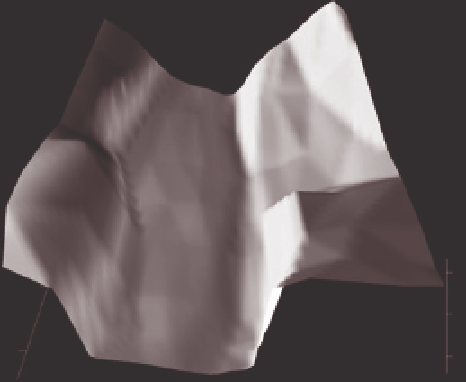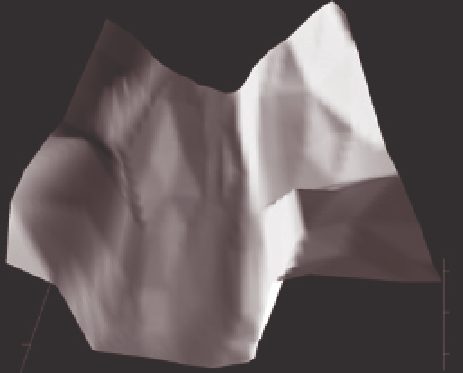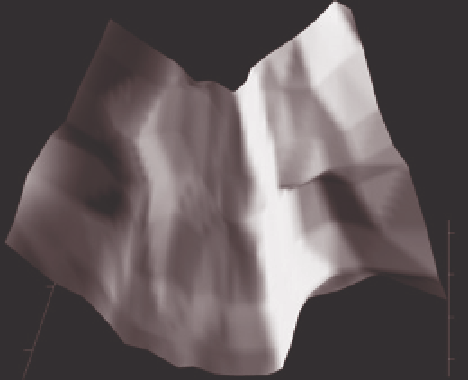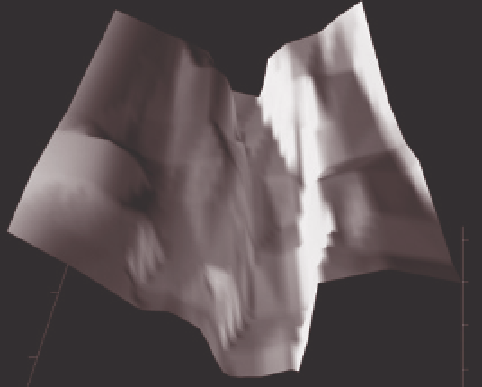Environmental Engineering Reference
In-Depth Information
(m)
1.5
(m)
1.5
10
10
1
1
12
0.5
12
0.5
(m)
(m)
(a)
(b)
(m)
(m)
2
2
1.5
1.5
10
10
1
1
12
12
0.5
0.5
(m)
(m)
(c) (d)
Fig. 5.1
Morphological changes in an urban channel verifi ed by bathymetries: (a) November, 2003; (b) September, 2004;
(c) January, 2005; (d) September, 2005.
Adapted from Poleto & Merten (2007).
which can generate toxic gases, offensive odors, and
the presence of toxic organic and inorganic sub-
stances in the water column. The disequilibria caused
by the interaction of human beings with terrestrial
ecosystems have implications for the ecological cycle
and therefore water quality (Jorge 2007). The sever-
ity of the problem is exacerbated by the presence of
contaminated sediments with which the water
column is permanently in contact. The alterations
that occur in the aquatic ecosystem refl ect, in part,
the impacts suffered by the terrestrial ecosystem,
sediment being an important link between the two.
In this context, studies characterizing sediments can
be held up as good indicators of these alterations in
urban areas. The impacts of the erosion and accu-
mulation of such sediment on receiving watercourses
results in a feedback mechanism whereby the river
adjusts to changes caused by urbanization (see, for
example, Poleto & Merten 2007). These changes are
worse, for instance, with the quantity of solid resi-
dues present in Brazilian rivers whereby the quanti-
ties involved can actually alter river morphology (see
Poleto
et al
. 2005).
Humans have simultaneously increased the sedi-
ment transport by global rivers through soil erosion
(by 2.3
±
0.6 billion tonnes per year), yet reduced the









